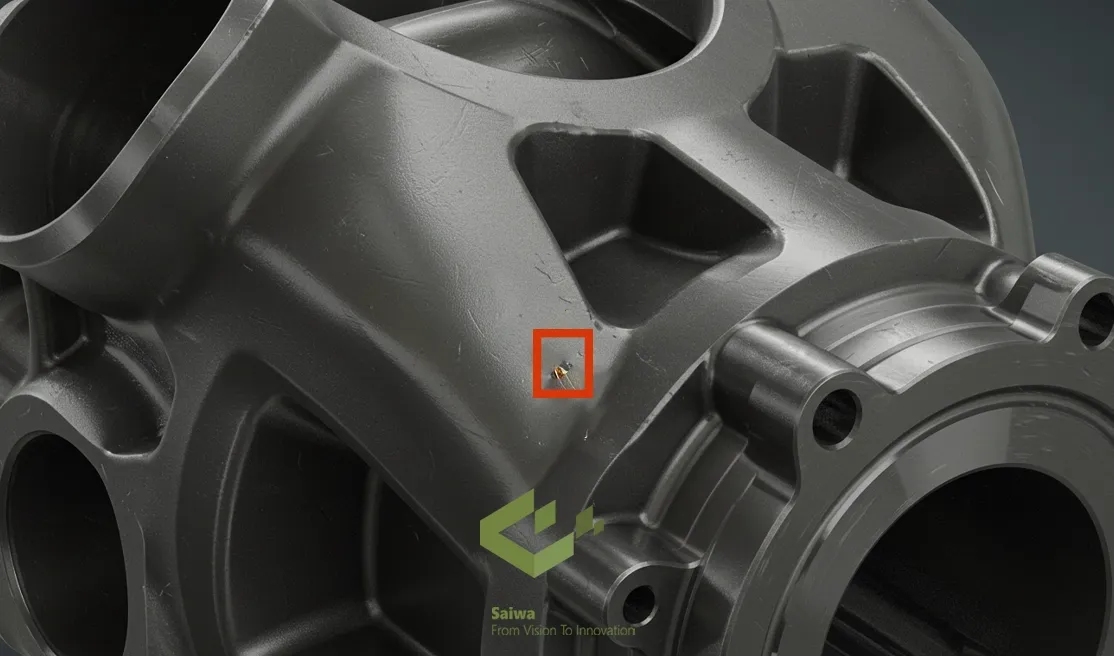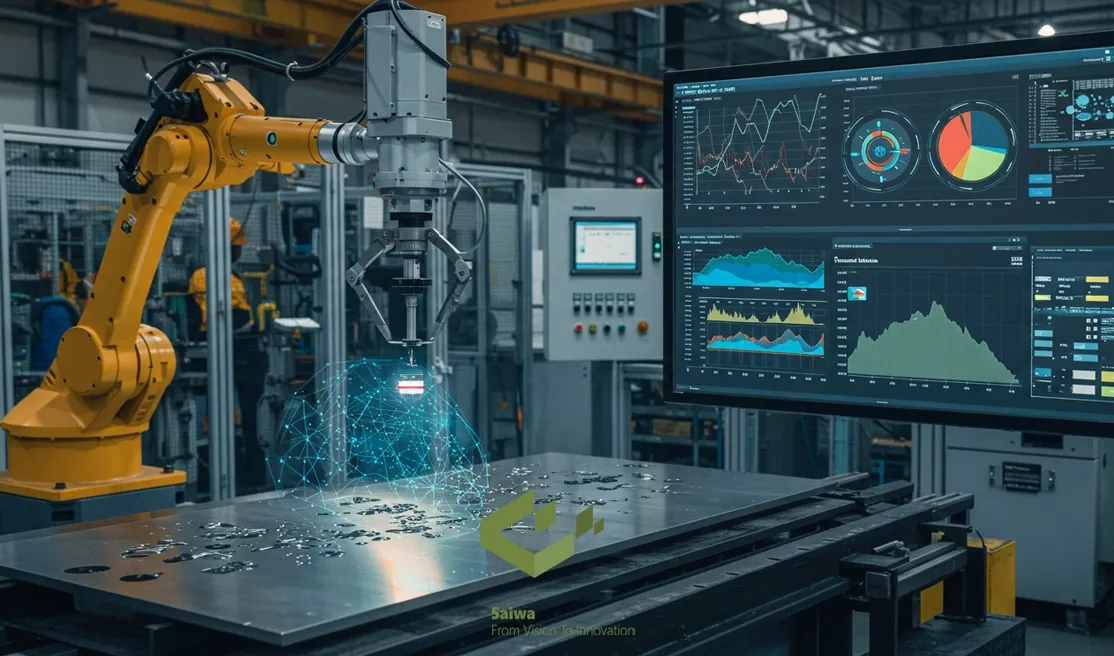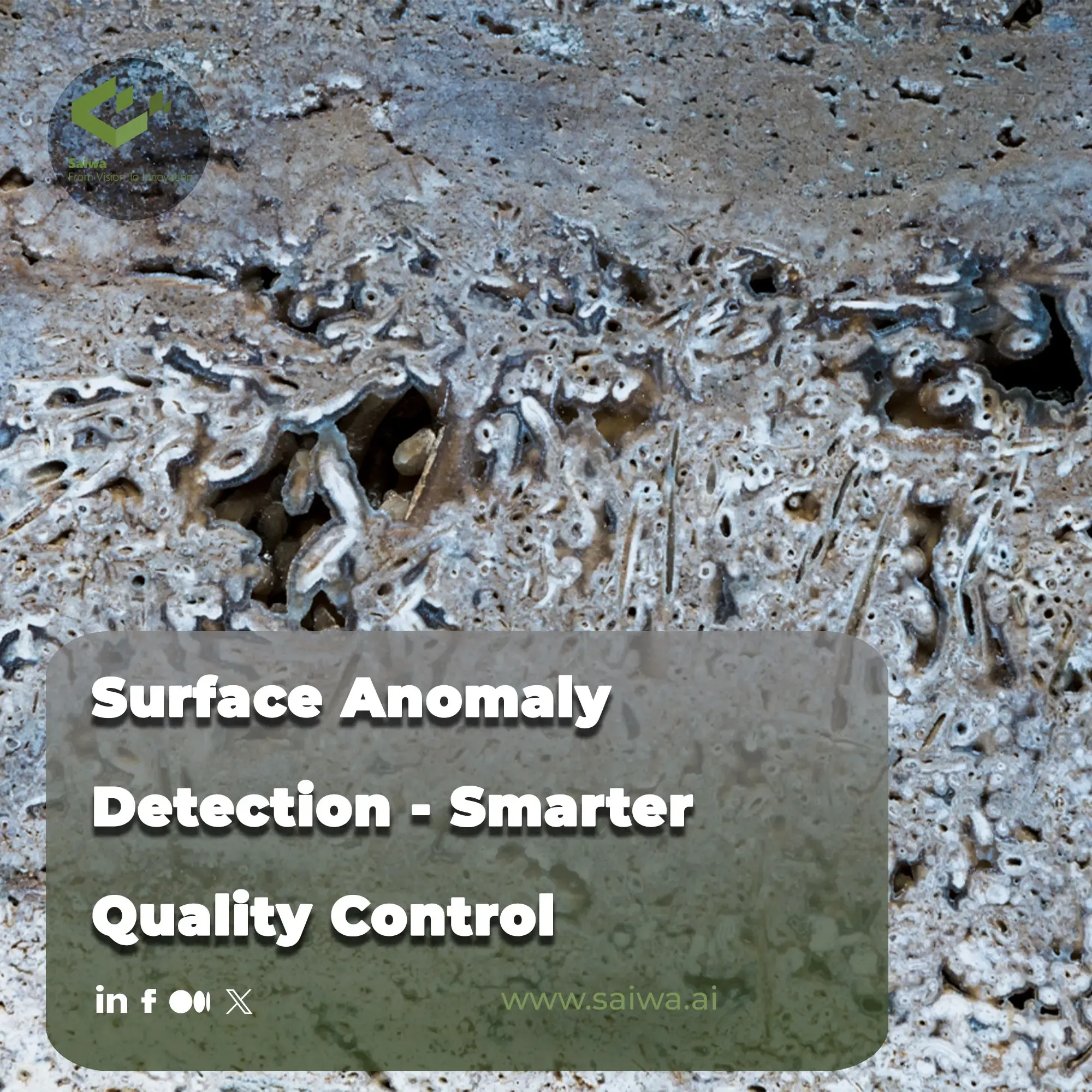In industries where precision is paramount, the pursuit of perfection is relentless. The manual inspection of surfaces, a traditionally labor-intensive and error-prone process, is no longer sufficient to meet the demands of modern manufacturing and quality control. This challenge has paved the way for advanced AI-driven solutions that are redefining what’s possible. At the forefront of this transformation is Saiwa, offering powerful tools that turn complex visual data into actionable intelligence.
This article provides a comprehensive guide to the core principles, modern techniques, and transformative industrial applications of surface anomaly detection.
What is Surface Anomaly Detection?
Surface Anomaly Detection is a specialized field of computer vision focused on the automated identification of defects, flaws, or irregularities on the surface of an object. Unlike traditional machine vision systems that rely on explicitly programmed rules modern systems use machine learning to model what a ‘perfect’ surface looks like.
Consequently, they can identify any deviation from this norm such as scratches, cracks, stains, or textural inconsistencies with superhuman accuracy and speed, making them indispensable for intelligent quality control in a production environment.

Modern Approaches to Surface Anomaly Detection
The evolution from rule-based systems to deep learning has unlocked unprecedented capabilities in automated inspection. Today’s methods are particularly focused on unsupervised learning, a necessity born from the industrial reality where flawless samples are abundant, but defective ones are rare and diverse. Let's explore some of the most influential techniques shaping the industry.
Unsupervised Reconstruction-Based Methods
This is arguably the most dominant approach for its efficiency and practicality. The core idea is to train a model, typically a Convolutional Autoencoder (CAE) or a Generative Adversarial Network (GAN), exclusively on "normal" (defect-free) images. The model learns to compress and then reconstruct these perfect samples.
When a new image containing an anomaly is fed into the model, it struggles to reconstruct the unfamiliar defect. By subtracting the reconstructed image from the original, a "residual map" is generated, effectively highlighting the location and shape of the anomaly with high precision.
Discriminative Reconstruction Embedding
Building upon reconstruction, this advanced technique introduces a discriminative element to enhance detection accuracy. Instead of just learning to reconstruct, the model simultaneously learns to embed the reconstructions into a feature space where normal and anomalous samples are more clearly separated.
This hybrid approach helps the system make more confident decisions, reducing the ambiguity between subtle, acceptable variations and genuine defects, a critical factor for robust industrial deployment.
Feature-Space and Embedding-Based Approaches
Rather than working in the pixel space, these methods operate in a more abstract "feature space." A deep neural network, often pre-trained on a massive dataset like ImageNet, is used to extract a rich feature vector (an embedding) from an input image.
The system then learns the distribution of these embeddings for all normal samples. During inference, if the feature vector of a new image falls outside this learned distribution, it is flagged as an anomaly. This technique is powerful because it captures semantic-level properties of the surface rather than just pixel values.
Segmentation-Focused Deep Learning
For applications requiring the highest level of detail, segmentation models provide pixel-perfect localization of defects. These methods go beyond merely flagging an image as anomalous; they outline the precise boundaries of each flaw.
This is essential for understanding the severity and nature of a defect, enabling more sophisticated root-cause analysis and process improvements, further solidifying the value of automated surface anomaly detection.
A significant advancement bridging the gap between unsupervised approaches and real-world needs is the emergence of self-supervised methods, where synthetic anomalies are intelligently generated and pasted onto healthy samples to create a richer learning environment.
By leveraging sophisticated cut-and-paste strategies or even generative models to simulate a wide spectrum of potential defects—from subtle discolorations to complex textural fractures—the system is forced to learn more precise discriminative features.
This approach not only compensates for the scarcity of real defective data but also dramatically improves the model's generalization capabilities, enabling it to detect novel, previously unseen types of anomalies in a live production setting.
Industrial Applications of Surface Anomaly Detection Across Sectors
The utility of smart visual inspection is not a theoretical concept; it's a proven asset creating tangible value across a diverse range of industries. By automating the search for imperfections, these systems drive efficiency and guarantee quality at scale. Below are some key sectors where this technology is making a significant impact.
Manufacturing and Quality Control: This is the primary domain, with applications in inspecting steel plates, textiles, plastics, semiconductors, and metal components for any surface flaw.
Automotive and Aerospace: Critical for ensuring the structural integrity of engine parts, turbine blades, and body panels by detecting microscopic cracks or inconsistencies.
Logistics and Packaging: Guarantees that packaging is free from defects, labels are correctly applied, and product presentation meets brand standards before shipping.
Healthcare and Medical Devices: Provides essential inspection for implants, surgical tools, and pharmaceutical packaging, where surface purity and integrity are non-negotiable.
Agriculture: Used to grade fruits and vegetables by detecting blemishes, bruises, or signs of disease, ensuring only high-quality produce reaches the market. It also supports advanced weed detection by identifying unwanted vegetation.
Read Also : Anomaly Detection Service

Key Advantages of Implementing Surface Anomaly Detection
Implementing a Surface anomaly detection system goes far beyond just finding flaws; it unlocks a cascade of operational benefits that resonate directly on the bottom line, empowering businesses to become more competitive and efficient.
Improved Product Quality and Reduced Waste
By catching defects early and consistently, manufacturers can significantly enhance the quality and reliability of their final products. This not only boosts customer satisfaction but also minimizes scrap, rework, and warranty claims, leading to substantial cost savings and a more sustainable operation.
Reduced Downtime and Costs
Automated systems operate 24/7 without fatigue, drastically reducing the labor costs associated with manual inspection. Furthermore, by providing real-time feedback on defect trends, these systems can help operators identify and address production issues proactively, preventing costly line stoppages.
Scalable Real-Time Monitoring
Unlike manual inspection, which becomes a bottleneck at high speeds, AI-powered systems are built for velocity. They can inspect hundreds or even thousands of units per minute, making them perfectly suited for modern, high-volume production lines and ensuring that quality control keeps pace with manufacturing.
Versatility Across Diverse Surfaces
The power of deep learning lies in its ability to adapt. Whether the target surface is a smooth metal sheet, a textured fabric, a complex printed circuit board, or a natural material like wood, these systems can be trained to understand the unique characteristics of each, offering a highly versatile quality control solution.
Key Considerations for Implementing Surface Anomaly Detection Systems
While incredibly powerful, a successful surface anomaly detection implementation requires a strategic approach that navigates several key technical and practical hurdles. Organizations must carefully weigh these factors to ensure a smooth and effective deployment.
Training Data Limitations: The "cold start" problem is the most common challenge. Since these systems often learn from perfect examples, acquiring a sufficiently large and representative set of "normal" data under real-world conditions is crucial.
Model Complexity vs. Speed: A trade-off often exists between a model's accuracy and its inference speed. Highly complex models may detect the tiniest flaws but might be too slow for a fast-moving production line, requiring careful optimization.
Robustness to Real-World Noise: Industrial environments are not pristine labs. Variations in lighting, camera vibrations, or dust can introduce "noise" that the system might misinterpret as an anomaly. The model must be robust enough to tolerate such changes.
Evaluation Metrics and Datasets: Defining what constitutes success is key. Metrics must be chosen carefully to reflect business goals, whether it’s minimizing false positives (incorrectly flagging good parts) or false negatives (missing actual defects).
Note: Beyond initial deployment challenges, a critical long-term consideration is managing the phenomena of Domain Shift and Concept Drift, where the statistical properties of the input data evolve over time due to subtle changes in raw materials, ambient conditions like lighting, or even camera sensor degradation.
A model that was perfectly calibrated on day one can suffer from silent performance decay as these changes accumulate, eventually leading to an increase in false alarms or missed defects if not addressed through continuous monitoring and periodic recalibration.
This necessitates designing the system not as a static, one-time deployment but as a dynamic solution with built-in mechanisms for drift detection and efficient model retraining strategies.
How Fraime Simplifies Surface Anomaly Detection for Industry
Navigating the complexities of model selection, data curation, and deployment can be a resource-intensive endeavor. This is precisely where an AI-as-a-Service platform offers a streamlined and powerful path to adoption. Saiwa's Fraime platform provides a robust, pre-trained anomaly detection service accessible via a simple API.
Instead of building a system from scratch, developers and engineers can integrate this capability directly into their quality control workflows. Fraime handles the heavy lifting of machine learning, processing images to deliver an intuitive heatmap that pinpoints potential defects.
Imagine applying this powerful engine to specialized agricultural challenges, refining processes from quality control on produce to supporting advanced weed and pest identification analytics. Fraime provides the foundational tools to turn that potential into a reality, democratizing access to state-of-the-art surface anomaly detection.
Conclusion
Surface anomaly detection has officially moved from a niche academic pursuit to a cornerstone of modern industrial automation. Its ability to deliver objective, scalable, and tireless quality control is transforming manufacturing standards. As the technology continues to advance, its integration will become even more seamless, further empowering businesses to achieve unprecedented levels of quality and efficiency in an increasingly competitive world.
Note: Some visuals on this blog post were generated using AI tools.

